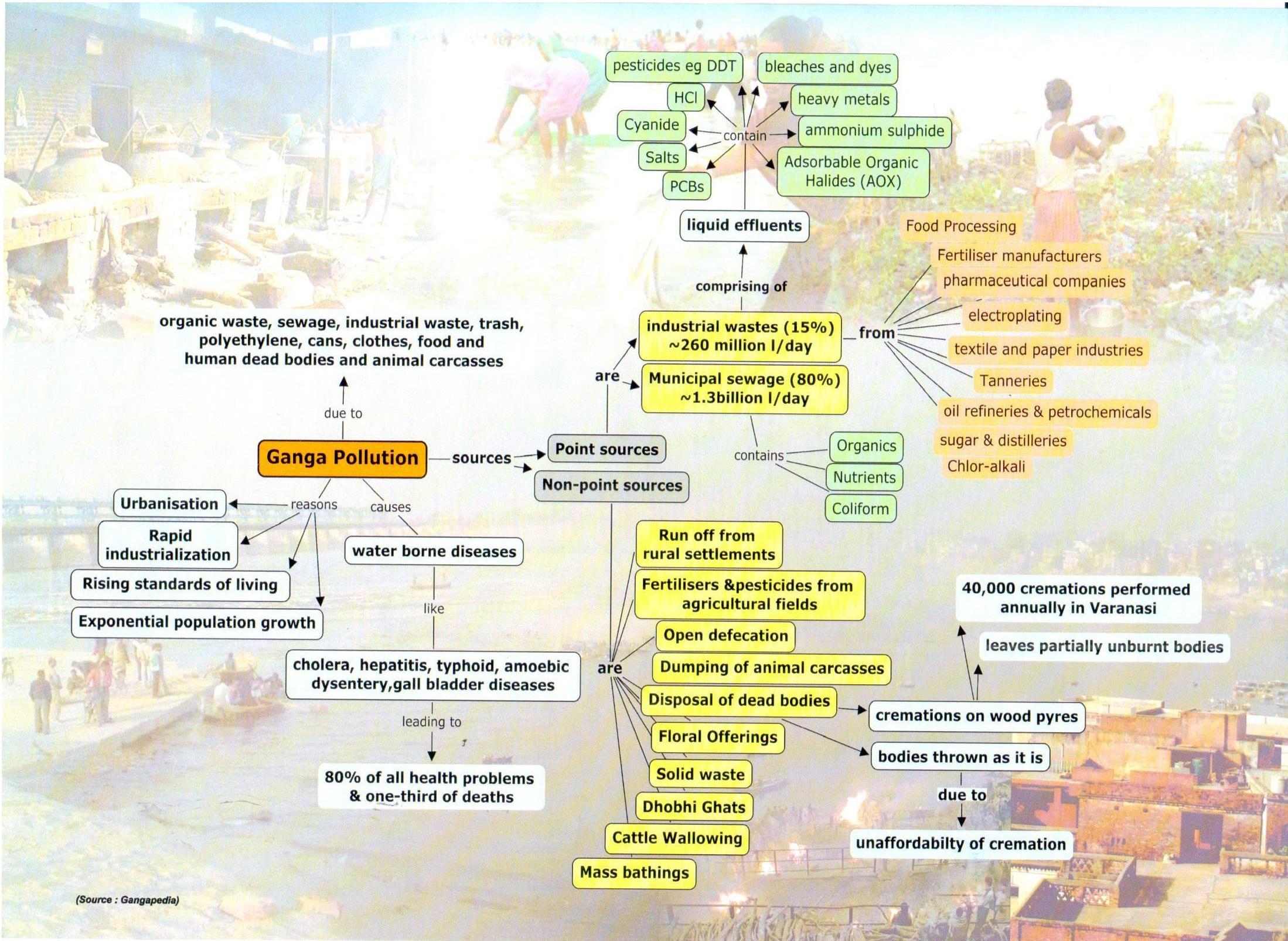Namami Gange Program

Figure 1: No Copyright Infringement Intended
Context:
- Government has apprised the Loksabha about the progress made in Namami gange program.
Progress made so far:
- So far, a total of 363 projects have been taken up at an estimated cost of Rs. 30,841.53 Crore, out of which 177 projects have been completed and made operational.
- 160 sewerage infrastructure projects have been taken up with a cost of Rs. 24,567.82 Crore for creation & rehabilitation of 5,024 Million Litres per Day (MLD).
- 75 sewerage projects have been completed resulting in creation & rehabilitation of 1,163 MLD of STP capacity and laying of 3,807 KM sewerage network.
- Out of the 56 projects due for completion in 2021, total of 17 Sewerage infrastructure projects have been completed in the Ganga basin since Jan 2021 in the States of Uttarakhand (4 nos.), Uttar Pradesh (7 nos.), Bihar (2 nos.), Jharkhand (1 no.) and Delhi (3 nos.).
- Creating River-Front Development:-63 Ghats/Crematoria projects for construction, modernization, and renovation of 262 Ghats/Crematoria and Kunds/Ponds have been initiated.
- River Surface Cleaning:-River Surface cleaning for collection of floating solid waste from the surface of the Ghats and River and its disposal are afoot and pushed into service at 11 locations.
- Afforestation: The main purpose of the proposed forestry interventions is to contribute towards holistic conservation of river Ganga, including improving the flow in the river (Aviralta) by adopting a multi-pronged approach throughout the pre-defined Ganga riverscape.
- Public Awareness:-A series of activities such as events, workshops, seminars and conferences and numerous IEC activities were organized to make a strong pitch for public outreach and community participation in the programme.
- Industrial effluent monitoring: Regulation and enforcement through regular and surprise inspections of GPIs is carried out for compliance verification against stipulated environmental norms.
About Namami Gange Program:
- It is an Integrated Conservation Mission, approved as ‘Flagship Programme’ by the Union Government in June 2014 with budget outlay of Rs.20,000 Crore to accomplish the twin objectives of effective abatement of pollution, conservation and rejuvenation of National River Ganga.
Need for Namami Gange Program:
- River Ganga has significant economic, environmental and cultural value in India.
- Rising in the Himalayas and flowing to the Bay of Bengal, the river traverses a course of more than 2,500 km through the plains of north and eastern India.
- The Ganga basin - which also extends into parts of Nepal, China and Bangladesh - accounts for 26 per cent of India's landmass.
- The Ganga also serves as one of India's holiest rivers whose cultural and spiritual significance transcends the boundaries of the basin.
- In the Ganga basin approximately 12,000 million litres per day (mld) sewage is generated, for which presently there is a treatment capacity of only around 4,000 mld.
- The threat of global climate change, the effect of glacial melt on Ganga flow and the impacts of infrastructural projects in the upper reaches of the river, raise issues that need a comprehensive response.
Pollution in Ganga:
- Rapidly increasing population, rising standards of living and exponential growth of industrialization and urbanization have exposed water resources to various forms of degradation.
- The deterioration in the water quality of Ganga impacts the people immediately.
- Ganga has become unfit even for bathing during lean seasons.
- The impacts of infrastructural projects in the upper reaches of the river Ganga raise issues.
Salient features of the Scheme:
- It will cover 8 states, 47 towns & 12 rivers under the project.
- Over 1,632-gram panchayats on the banks of Ganga to be made open defecation-free by 2022.
- Several ministries are working with nodal Water Resources Ministry for this project includes - Environment, Urban Development, Shipping, Tourism and Rural Development Ministries.
- Prime focus will be on involving people living on the river's banks in this project.
- Under the aegis of National Mission for Clean Ganga(NMCG) & State Program Management Groups (SPMGs) States and Urban Local Bodies and Panchayati Raj institutions will be involved in this project.
- Setting river-centric urban planning process to facilitate better citizen connects, through interventions at Ghats and Riverfronts.



1.png)
